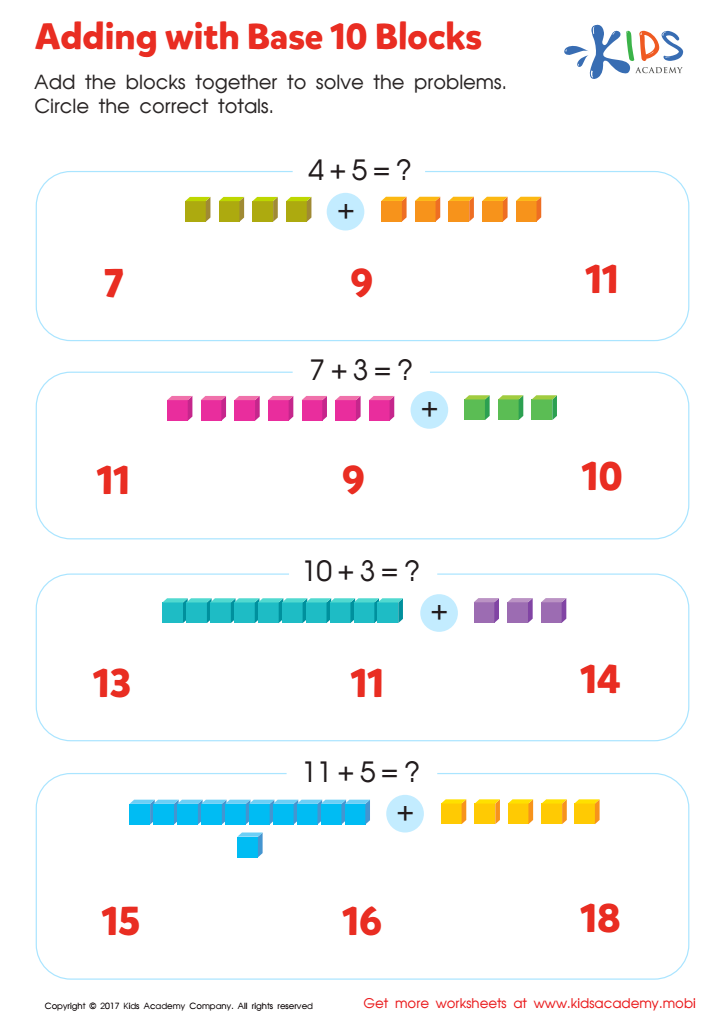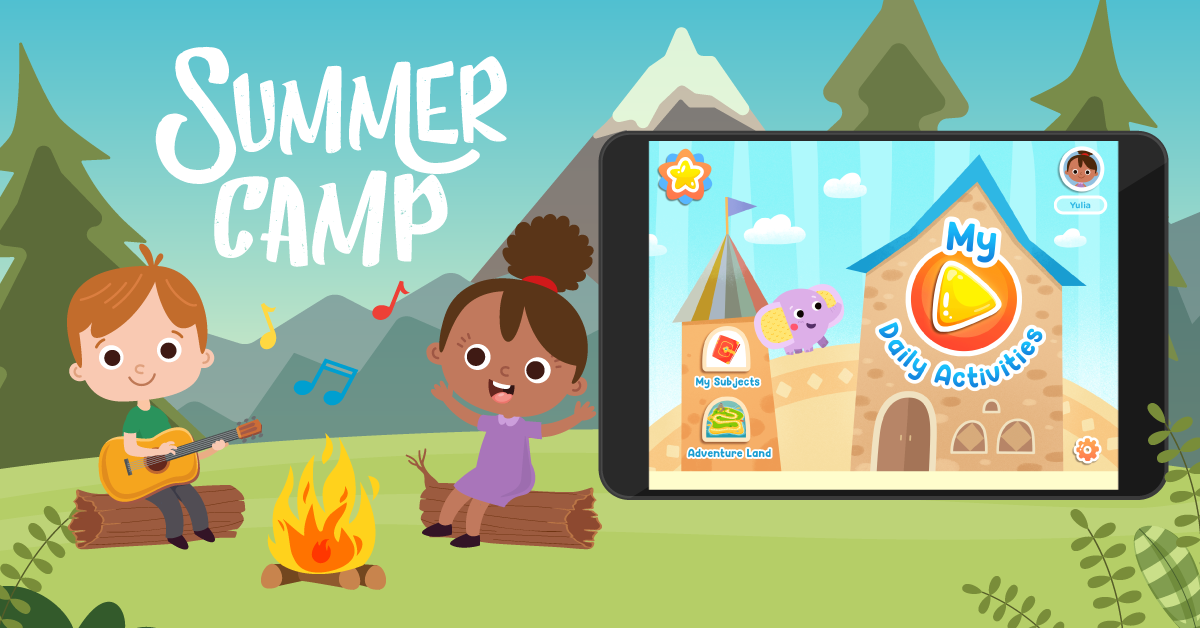Stimulate visual learning Worksheets for Kids
1 filtered results
-
From - To


Adding with Base Ten Blocks Worksheet
Question/Answer
How to train the Stimulate visual learning skill in Grade 1 students learning about Numbers?
To train the visual learning skill in Grade 1 students learning about numbers, incorporate activities like colorful number flashcards, interactive digital games, and number puzzles. Use visual aids like number lines and charts, and engage them in drawing or coloring exercises focusing on numbers. This multi-sensory approach enhances retention and understanding of numbers through visual stimulation.
What does the Stimulate visual learning skill mean when it comes to Grade 1 Numbers learning?
The Stimulate visual learning skill in Grade 1 Numbers learning involves using visual aids and activities to help children understand and retain mathematical concepts. This approach leverages pictures, diagrams, videos, and interactive games, making abstract ideas more concrete and engaging, thus enhancing their ability to recognize and work with numbers more effectively.
Why is the Stimulate visual learning skill important for Grade 1 students?
Stimulating visual learning in Grade 1 students is crucial because it enhances their ability to process and retain information, develop observation skills, and understand concepts better. Visual learning supports reading and writing development, aids in memory retention, and makes learning more engaging and enjoyable for young learners, laying a strong foundation for future academic success.
 Assign to the classroom
Assign to the classroom












